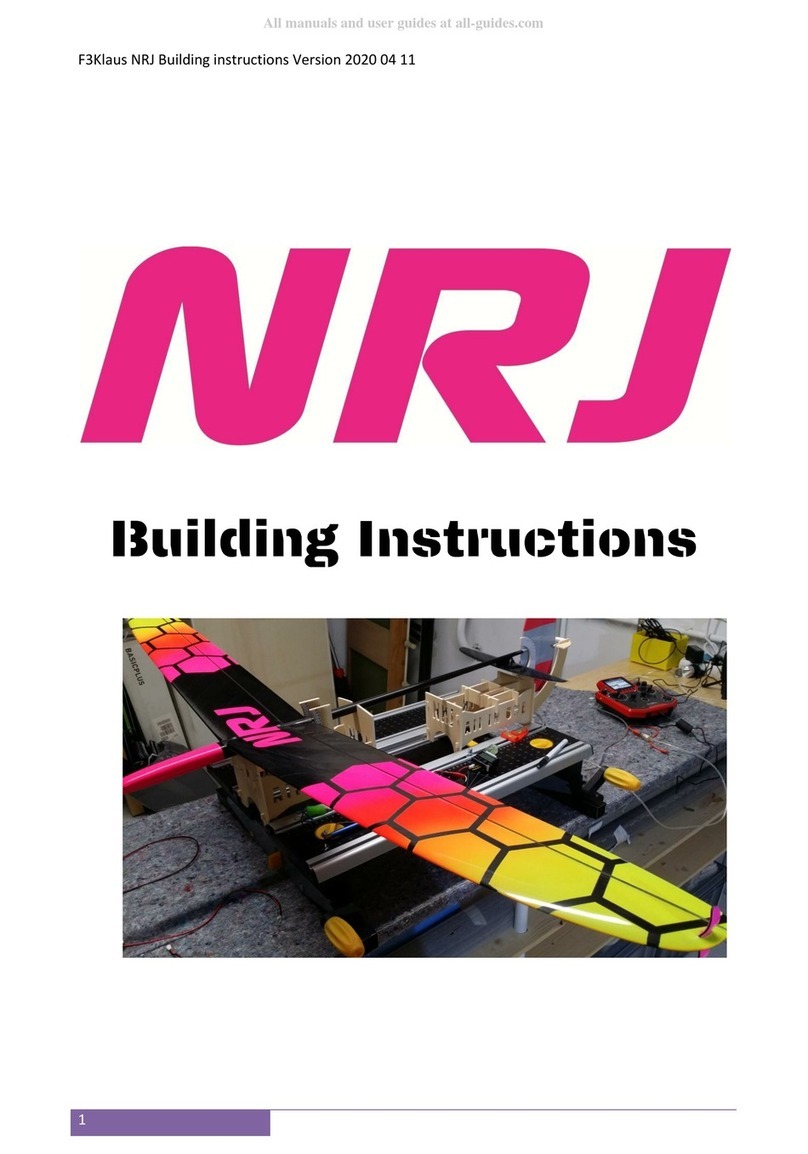
Aileron linkage installation
In order to have as little play and as rigid a control rod as possible, it is preferable to use the elements provided in the kit,
such as the plastic sleeves and 1mm control rods or TFLE (Teflon) tubes and 1.2mm rods.
Check the hole diameter of the horns both the servo and control horns for a tight fit. If one of the holes is just a bit loose,
using a slightly oblique elbow joint or a CA drop should help remove the residual slop.
Kinematic requirements for ailerons:
For the optimal range of motion on the ailerons (+35mm of down for full flap, -13mm up) we need a linear range of
(+6.5mm, -2.5mm) of the control rod at the aileron horn linkage, with a matching range of motion on the servo horn. The
aileron servo horn should normally be a 2 holes horn for KST servo (Axle to 2nd hole: 6.5mm) and 1 hole for MKS servos...
(Axle to single hole: 7mm). Keep these ratings for perfect range and precision.
At neutral, the aileron horn servos must be 20-30° backward tilted to the ailerons direction, to fit the servos and ailerons
linear ranges better. In total, 9mm of linear range must be managed on both aileron and servo horns. Notice that we
must choose the shortest servo horn possible to prevent any instance of flutter, which damages servos over time, caused
by the torque and vibration constraints that are transmitted by the aileron linkages. But we must keep enough length in
the lever arm to allow for enough linear range. You may be tempted to put quite longer horns to allow for easier ballast
passage in the center of the fuselage. Rest assured, the ballast system enters the fuselage perfectly as we designed if all
assembly is done per the instructions herein.
Always use the maximum angular travel possible for the servo with full radio travels. This will ensure the trims precision.
Fit the aileron and servo horns’ holes to the rods diameter with a rod piece. Start the linkage build from ailerons and finish it at the servo horn.





























